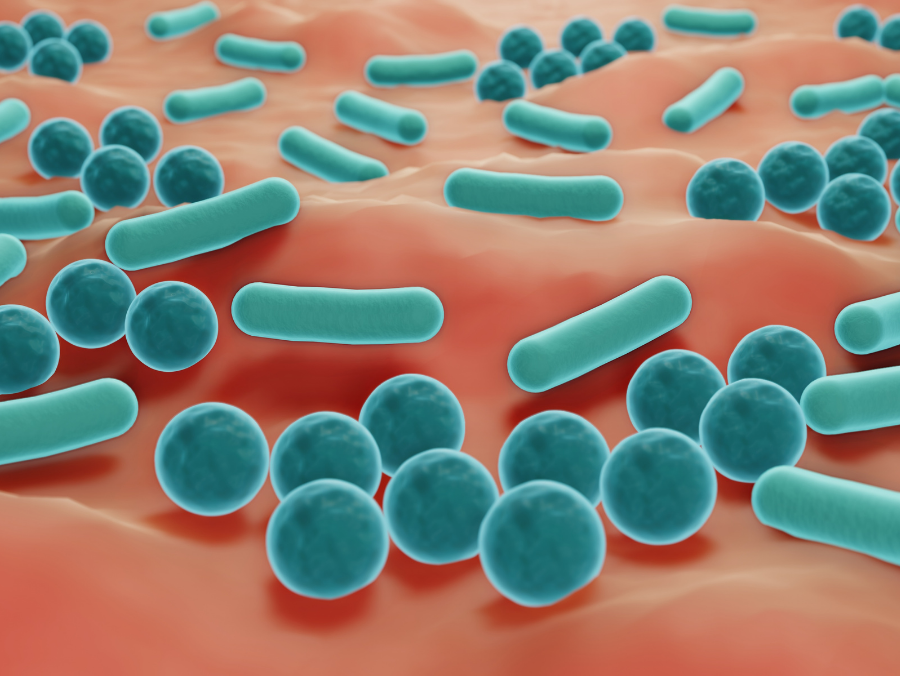Did you know that the average person has around 1000 types of bacteria, fungi, viruses, and mites on their skin? Okay, maybe you didn’t actually want to know that, but not only is it completely normal, it’s also important.
This collection of microorganisms living on the skin is called the skin microbiome.
What is the skin microbiome?
The skin is our largest organ and plays a critical role in protecting the rest of the body. As the first line of defense against disease and infection, it’s essential that the skin is also protected.
There are different types of microbes throughout the body that do many different jobs. The skin microbiome is made up of billions of microbes (also called skin flora) that work with the immune system to help prevent bacteria and other pathogens from causing issues in the body.
In an ideal world, the skin has a healthy amount of microbes, but many things can disrupt the balance of the skin microbiome and reduce its effectiveness against pathogens.
How is the skin microbiome disrupted?
The health of the skin microbiome can be affected by everything from your lifestyle and diet to your personal hygiene habits and the environment.
Harsh soaps and overuse of antibiotics can decrease the number of microbes present, as well as modern hygiene practices like showering daily. Don’t worry; we’re not suggesting that you stop showering!
An unhealthy diet also plays a role in the balance of the skin microbiome. There are strong ties between the microbiome of the skin and that of the digestive tract, or gut. Damage to the gut microbiome influences the health of the skin, making diet an important factor.
What are the signs of an imbalanced skin microbiome?
Knowing the importance of the skin microbiome, you should be on the lookout for signs that your clients are suffering from an imbalance. Guidance on how to restore the balance can help to improve overall skin health and appearance.
Disruption of the skin microbiome can manifest in several ways:
- immune sensitivities like eczema, psoriasis, or skin allergies
- difficulty healing from wounds
- acne
- dandruff and dry skin
- yeast and other fungal infections
- accelerated signs of aging
How can you protect the skin microbiome?
While the number of skin flora is far lower in modern societies due to hygiene and environmental effects, there are several ways to help protect our existing microbiome.
1 | Avoid over-cleansing and harsh products.
While it’s important to clean your skin, don’t go crazy. Beware of scrubbing too hard or overusing exfoliating ingredients.
2 | Eat a healthy diet and drink plenty of water.
Getting plenty of healthy fats, protein, vegetables, and fiber all contribute to the level of good bacteria in the gut and skin. Staying hydrated is important for the body to function well overall.
3 | Avoid synthetic fabrics.
Man-made fabrics are often tight and worn close to the skin, which can affect the environment needed for good skin flora to thrive. Stick to cotton and other natural fibers when possible.
4 | Use soap instead of hand sanitizer when possible & moisturize regularly.
The benefit of using hand sanitizer to protect you from Covid-19 outweighs the risk to your skin microbiome. That being said, wash your hands with soap and water when possible.
The alcohol that makes hand sanitizer effective against viruses also strips the good bacteria from your skin. When hand sanitizer is the only option, be sure to moisturize regularly. Ideally your moisturizer should be free of sulfates and contain natural fats like coconut oil.
5 | Consider pre, pro, or postbiotic products.
Prebiotics are like fertilizer that encourage the growth of good bacteria in your skin microbiome.
Probiotics are made up of live microorganisms and are found in foods like yogurt. You can also find skincare products containing probiotics, but they often need to be refrigerated or have a shorter shelf life.
Postbiotics are chemical byproducts of living microbes so they can give you some of the benefit of probiotics, but they typically last longer.
The Bottom Line
In order for the skin to do its job, it’s important to protect the skin microbiome. Be aware of the signs of an imbalance so that you can steer your clients towards behaviors and habits that allow the skin flora to flourish and work effectively.

